Keynote Talks
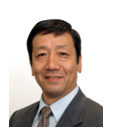
Session TuB1: 50 Years of Robotics: Field Robotics
Tuesday, May 4, 2010 (10:25-11:00)
Dena’ina Center, Tikahtnu A
Dr. Shigeo Hirose
Professor, Mechanical and Aerospace Engineering
Tokyo Institute of Technology
50 Years of Robotics and Automation: Field Robotics
Abstract: In the case of robots working inside factories, robots are usually installed at a fixed location and manufacturing parts are fed to them. However, in the case of field robots, objects of interest can be located anywhere within the natural environment, making high terrain-adaptive mobility a necessity. The robot must approach the object, rather than the object approaching the robot. Therefore, terrain-adaptive mobility is one of the key technological components needed to realize practical field robots. In this presentation, the basic configurations of mobile robots are classified into three types; infinite-rotation robots, which includes robots with wheels and crawlers, walking robots, and articulated-body robots. Using this framework, the research of the last fifty years is discussed and a prospective view of the future is offered.
Biography: Shigeo Hirose is the Professor of Tokyo Institute of Technology (Tokyo Tech) Department of Mechanical and Aerospace Engineering since 1992 and director of Super Mechano-System Innovation and Development Center since 2006. He received the B. E. degree with first class honors in Mechanical Engineering from Yokohama National University in 1971, M. Eng. & Ph.D. Eng. degrees in Control Engineering in 1973 and 1976 respectively from Tokyo Tech. He was a Research Associate (1976-1979) and Associate Professor (1979-1992) of Tokyo Tech. His research interest is in the creative design of robotic mechanisms, and he studied multiple types of robots, such as snake-like, walking, wall climbing, crawler and swarm types and developed humanitarian demining robots, rescue robots, welfare robots, and planetary rovers.
Prof. Hirose has been awarded more than fifty academic prizes including: the Engelberger Robotics Award from Robotic Industries Association in 2009, the Medal with Purple Ribbon in spring 2006 from Japanese government, the first Pioneer in Robotics & Automation Award in 1999 and Best Conference Paper Award in 1995, both from the IEEE Robotics & Automation Society and the first award of Merit in 2004 from IFToMM. He has published more than 500 academic papers and books, including “Robotics” (Shokabo Publishing Co. Ltd., 1987, in Japanese), and “Biologically Inspired Robots” (Oxford University Press, 1993). He is a Fellow of IEEE, JSME and RSJ.
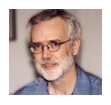 Session TuB2: 50 Years of Robotics: Industrial Robotics and Automation
Session TuB2: 50 Years of Robotics: Industrial Robotics and Automation
Tuesday, May 4, 2010 (10:25-11:00)
Dena’ina Center Tikahtnu B/C
Dr. Matthew T. Mason
Professor, Computer Science and Robotics
Carnegie Mellon University
Automation and Robotics
Abstract: This talk addresses the relation of factory automation and robotics. The main idea is to view an automated factory as an object of scientific study, furthering the primary goal of robotics, which is to understand the principles of animated machines. Factories offer many advantages to the aspiring roboticist. You can vivisect a factory without impeding its operation, and without moral concerns. You can discuss its design with its creator. And, since factory automation was not contrived by robotics researchers, the study of automated factories is closer to a natural science than, say, study of robotic origami. One question is whether factory automation, as a “structured” task domain, is so fundamentally different from “unstructured” task domains, as to limit the scope of any principles learned. The talk will include an attempt to bring some precision to the concepts of structured and unstructured task domains.
Biography: Matthew T. Mason earned the BS, MS, and PhD degrees in Computer Science and Artificial Intelligence at MIT, finishing his PhD in 1982. Since that time he has been on the faculty at Carnegie Mellon University, where he is presently Professor of Robotics and Computer Science, and Director of the Robotics Institute. His prior work includes force control, automated assembly planning, mechanics of pushing and grasping, automated parts orienting and feeding, and mobile robotics. He is co-author of “Robot Hands and the Mechanics of Manipulation” (MIT Press 1985), co-editor of “Robot Motion: Planning and Control” (MIT Press 1982), and author of “Mechanics of Robotic Manipulation” (MIT Press 2001). He is a Fellow of the AAAI, and a Fellow of the IEEE. He is a winner of the System Development Foundation Prize and the IEEE Robotics and Automation Society’s Pioneer Award.
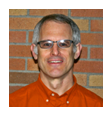 Session TuB3: 50 Years of Robotics: Medical and Life Sciences
Session TuB3: 50 Years of Robotics: Medical and Life Sciences
Tuesday, May 4, 2010 (10:25-11:00)
Dena’ina Center, Tikahtnu D/E
Dr. Blake Hannaford
Professor, Electrical Engineering
University of Washington
50 Years of Robotics and Automation: Robotics in Medical and Life Sciences
Abstract: Some of the most challenging applications of robotics arise in the medical and life sciences. A host of applications have become significant in recent decades in terms of the impact of robots in biomedical endeavors. From automating research and clinical laboratory procedures to assisting in neurosurgery, many new niches are being exploited and robotics research issues unique to these domains are being identified. While some laboratory applications amount to standard applications of well known automation principles, and some surgical applications amount to traditional teleoperation, this talk will emphasize frontiers where these traditional solutions are not sufficient. Some constraints unique to the biomedical problem space will be identified and some currently outstanding problems will be highlighted.
Biography: Blake Hannaford, Ph.D., is Professor of Electrical Engineering, Adjunct Professor of Bioengineering, Mechanical Engineering, and Surgery at the University of Washington. He received the B.S. degree in Engineering and Applied Science from Yale University in 1977, and the M.S. and Ph.D. degrees in Electrical Engineering from the University of California, Berkeley, in 1982 and 1985 respectively. Before graduate study, he held engineering positions in digital hardware and software design, office automation, and medical image processing. At Berkeley he pursued thesis research in multiple target tracking in medical images and the control of time-optimal voluntary human movement. From 1986 to 1989 he worked on the remote control of robot manipulators in the Man-Machine Systems Group in the Automated Systems Section of the NASA Jet Propulsion Laboratory, Caltech. He supervised that group from 1988 to 1989. Since September 1989, he has been at the University of Washington in Seattle, where he has been Professor of Electrical Engineering since 1997, and served as Associate Chair for Education from 1999 to 2001. He was awarded the National Science Foundation's Presidential Young Investigator Award and the Early Career Achievement Award from the IEEE Engineering in Medicine and Biology Society and is an IEEE Fellow. His currently active interests include haptic displays on the internet, and surgical robotics. He has consulted on robotic surgical devices with the Food and Drug Administration Panel on surgical devices.

Session TuB4: 50 Years of Robotics: Energy, Environment and Society
Tuesday, May 4, 2010 (10:25-11:00)
Dena’ina Center Kahtnu 1/2
Dr. Dana R. Yoerger
Senior Scientist
Woods Hole Oceanographic Institution
Robots for Energy and Environment: Evolution and Revolution
Abstract: Robotic devices are routinely used for many tasks related to environmental investigation, extraction of energy resources, and in support of energy production and distribution. Approaches in these areas vary greatly in terms of scale, operating costs, and potential improvement in productivity. In many cases these advances represent the evolution of existing paradigms, with the new robotic systems offering improved productivity, data quality, or safety. For example, towed deep-sea sonar sleds have been largely replaced by autonomous vehicles, which can survey faster and provide higher data quality yet are still usually operated from support vessels in a conventional expeditionary manner. However, systems are emerging that represent revolutionary capabilities. These new systems will be able to accomplish tasks that are impossible through conventional methods while fundamentally altering the infrastructure required to support the work. For example, networks of gliding autonomous vehicles will be able to survey the ocean without an attending support vessel. In this talk, examples of both present and future robots with both evolutionary and revolutionary characteristics will be presented from a variety of perspectives, including ocean exploration, offshore oil and gas production, and weather forecasting.
Biography: Dr. Dana Yoerger is a Senior Scientist at the Woods Hole Oceanographic Institution where he supervises the research and academic program of graduate students studying oceanographic engineering through the MIT/WHOI Joint Program in the areas of control, robotics, and design. Dr. Yoerger has gone to sea on over 60 oceanographic expeditions, including the 1985 expedition that discovered the Titanic, pioneering cruises to the Mid-Ocean Ridge with remotely-operated and autonomous vehicles, and expeditions for archaeology and accident investigation. Dr. Yoerger has been a key contributor to the remotely-operated vehicle JASON; to the Autonomous Benthic Explorer (ABE); to the autonomous underwater vehicle, SENTRY; and the hybrid remotely operated vehicle, NEREUS which dove to the bottom of the Mariana Trench last year.
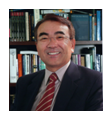
Session WeB1: 50 Years of Robotics: Perception
Wednesday, May 5, 2010 (10:25-11:00)
Dena’ina Center Tikahtnu A
Dr. Takeo Kanade
Robotics Institute
Carnegie Mellon University
Robot Vision: Where It Has Been and Where It Will Be
Abstract: Vision is one of the functionalities whose importance was recognized, and thus has been studied most intensively from the very beginning of Intelligent Robotics research. At the same time, its performance may not have been up to the expectation. However, the recent progress indicates that the situation is changing. This talk will provide the historical perspectives on the difficulties and accomplishments of robotics vision, and lay out the research topics, their goals we should set, and the potential approaches for future robotics vision.
Biography: Takeo Kanade is the U. A. and Helen Whitaker University Professor of Computer Science and Robotics and the director of Quality of Life Technology Engineering Research Center at Carnegie Mellon University. He received his Doctoral degree in Electrical Engineering from Kyoto University, Japan, in 1974. He was the Director of the Robotics Institute from 1992 to 2001. Dr. Kanade works in multiple areas of robotics: computer vision, multi-media, manipulators, autonomous mobile robots, medical robotics and sensors. Dr. Kanade has been elected to the National Academy of Engineering; the American Academy of Arts and Sciences. He received several awards including the Franklin Institute Bower Prize, the Joseph Engelberger Award, the IEEE Robotics and Automation Society Pioneer Award, and the IEEE PAMI Azriel Rosenfeld Lifetime Accomplishment Award.

Session WeB2: 50 Years of Robotics: Learning
Wednesday, May 5, 2010 (10:25-11:00)
Dena’ina Center Tikahtnu B/C
Dr. Sebastian Thrun
Professor, Computer Science and Electrical Engineering
Stanford University
Machine Learning for Robotic Perception and Control
Abstract: The speaker will discuss machine learning techniques for robotic perception and control. The recent ability to gather very large sets of data is transforming the field of robotics. Machine learning from large data sets is now replacing (or augmenting) traditional methods that relied heavily on mathematical modeling of robot systems. The speaker will discuss recent advances in applying machine learning techniques to problems in robot perception and controls. He will discuss applications to autonomous ground and air vehicles.
Biography: Sebastian Thrun is a professor at Stanford University, where he directs the Stanford Artificial Intelligence Laboratory. Thrun is one of the early pioneers of probabilistic robotics. His team won the DARPA Grand Challenge and placed second in the DARPA Urban Challenge. Thrun has published 11 books, over 300 technical papers, and has won numerous awards. He is an elected member of the National Academy of Engineering (USA) and of the German Academy of Sciences. Thrun is also a Principal Engineer at Google, where he was instrumental in the development of Google Street View.
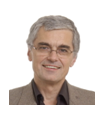
Session WeB3: 50 Years of Robotics: Planning
Wednesday, May 5, 2010 (10:25-11:00)
Dena’ina Center Tikahtnu D/E
Dr. Jean-Paul Laumond
Directeur de Recherche
LAAS-CNRS, Toulouse, France
Motion Planning: What Does It Move For?
Abstract: Motion planning has a long and successful story (not as long as the 50 year history of Robotics, but almost!). Consequently, a strong and rich background is available to today’s researcher. This background is often presented as being either theoretical or practical. In this talk I would like to take another point of view. A lot of results in motion planning have been steered by the “toy” problems. In a toy problem, the robot is hyped up to be a justification for theoretical developments. Such developments have found very nice applications in fields outside robotics, such as PLM, automation, computer animation or bio-informatics, i.e. in virtual and virtualized worlds. But, the success in making robots move with “algorithmic motion planning” is less pronounced. One clear reason is the lack of connection with perception. Another reason comes from the “motivation” for a robot to move. Motion planning does not exist per se. A robot moves to do something. We should then rather talk about action planning. However, we will see that trying to connect action planning and motion planning is not a trivial task. This question represents a current challenge for robot motion modeling and planning algorithms. It finds interesting counterparts with questions in life sciences.
Biography: Jean-Paul Laumond (IEEE Fellow) is Directeur de Recherche at LAAS-CNRS in Toulouse, France. With his group Gepetto (www.laas.fr/gepetto) he is exploring the computational foundations of anthropomorphic motion. He has been a Coordinator for two European Esprit projects, PROMotion (1992–1995) and MOLOG (1999–2002), both dedicated to robot motion planning technology. During 2001–2002, he created and managed Kineo CAM, a spin-off company from the LAAS-CNRS to develop and market motion planning technology. From 2005 to 2008 he was a co-director of JRL, a French-Japanese CNRS-AIST laboratory dedicated to humanoid robotics. He teaches robotics at the ENSTA and Ecole Normale Superieure in Paris. He published more than 150 papers in international journals and conferences in computer science, automatic control, robotics and neurosciences. He is a member of the IEEE RAS AdCom.

Session WeB4: 50 Years of Robotics: Control
Wednesday, May 5, 2010 (10:25-11:00)
Dena’ina Center Kahtnu 1/2
Dr. Mark W. Spong
Erik Jonsson School of Engineering & Computer Science
University of Texas at Dallas
The Interplay Between Robotics and Control Theory
Abstract: Beginning in the early 1980’s, advanced methods in control theory began to be applied to problems in robotics by many researchers. In turn, practical problems in robotics stimulated the development of new theoretical results in control theory that found wide-ranging applications in many fields beyond robotics. This talk will survey the rich interplay between robotics and control theory from 1980 to the present. Notable examples include differential geometric methods, passivity-based control and energy shaping, robust and adaptive control theory, hybrid and switching control and, more recently, the influence of robotics on communications and networked control systems.
Biography: Mark W. Spong is currently Dean of the Erik Jonsson School of Engineering and Computer Science and holder of the Lars Magnus Ericsson Chair and the Excellence in Education Chair at the University of Texas at Dallas. Prior to 2008 he was at the University of Illinois at Urbana-Champaign. Dr. Spong's main interests are in nonlinear control theory and robotics. He has published more than 250 papers and 4 books in the area. He is Past President of the IEEE Control Systems Society and Past Editor-in-Chief of the IEEE Transactions on Control Systems Technology. His recent awards include the 2007 IROS Fumio Harashima Award for Innovative Technologies, the 2008 IEEE Transactions on Control Systems Technology Outstanding Paper Award, the Senior Scientist Research Award from the Alexander von Humboldt Foundation, the John R. Ragazzini Award and O. Hugo Schuck Award from the American Automatic Control Council, and the IEEE Third Millennium Medal. Dr. Spong is a Fellow of the IEEE and President of Mechatronic Systems, Inc., a company that he founded in 1996.